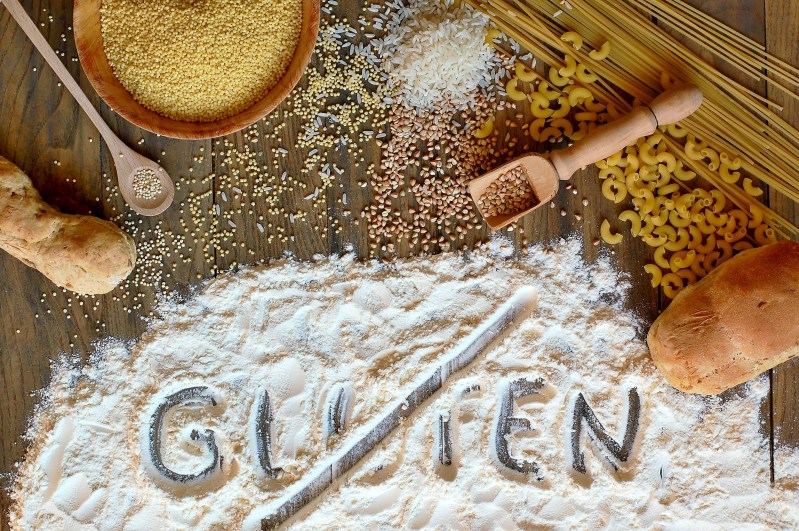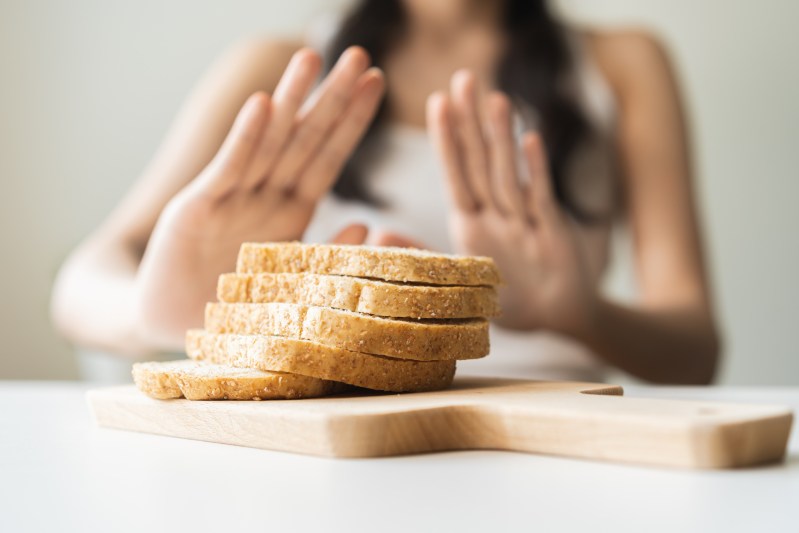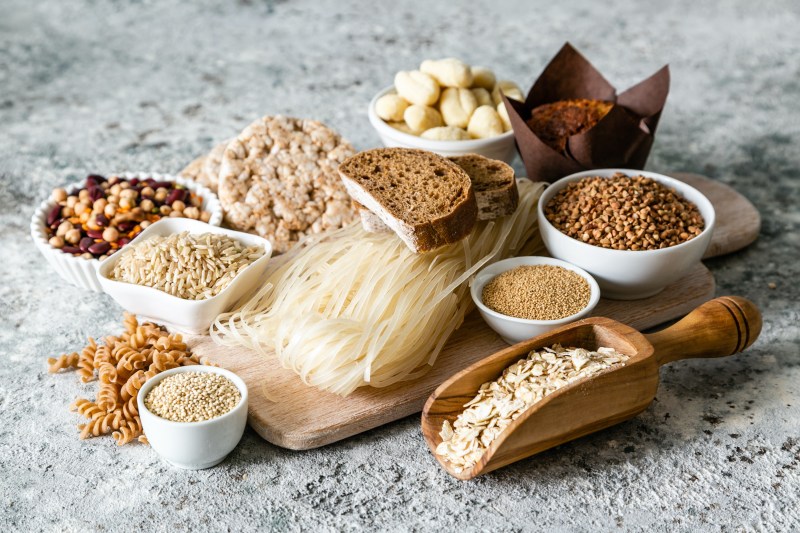
Nowadays, everyone is a self-proclaimed nutrition guru. The real question is, who can you truly trust? With so many myths and misconceptions, finding the right path for your personal wellness journey can feel like a corn maze of confusion.
To help you navigate the maze of gluten-related questions, we’ve turned to an authority on the subject, Dr. Abigail Raffner Basson, RD, LD, a distinguished nutrition instructor at Case Western Reserve University. Together, we’ll unravel the mysteries and set the record straight on gluten. There is a lot of information out there when it comes to nutrition, so let’s get to the bottom of it.

What is a gluten-free diet?
So, what exactly is a gluten-free diet, and why has it become a dietary choice for many? To demystify this eating regimen, let’s start with the basics.
Gluten, a protein naturally present in wheat, rye, barley, and triticale (a wheat-rye hybrid), is a complex molecule. A gluten-free diet is a nutritional approach that deliberately excludes any products potentially containing gluten. This encompasses a wide range of foods, including beloved indulgences like crackers, cookies, bread, and pastries.
As Dr. Raffner astutely points out, “Gluten is a protein that is naturally found in wheat, rye, barley, and triticale (a cross between wheat and rye). A gluten-free diet excludes gluten-containing foods and entails eating whole foods that don’t contain gluten such as fruits, vegetables, eggs, dairy, meats, as well as gluten-free processed foods.”
When our bodies struggle to break down gluten, the immune system perceives it as an intruder and goes into defensive mode, mounting an attack against this perceived threat. This immune response sets off a chain reaction within the body, leading to the emergence of unpleasant symptoms for those unable to effectively digest this protein. Due to this, many people must eliminate gluten from their diets.

Who should follow a gluten-free diet plan?
The decision to adopt a gluten-free diet isn’t one-size-fits-all; it depends on various factors and individual responses to gluten. Dr. Raffner offers valuable insights into identifying who can derive the most benefits from a gluten-free diet plan.
Celiac disease
According to Dr. Raffner, “Celiac disease is a condition where the immune system launches an adverse response to gluten. This autoimmune reaction can result in damage to the intestinal lining. Individuals with Celiac disease must adhere to a strict, lifelong gluten-free diet to mitigate symptoms and prevent potential complications.”
Non-celiac gluten sensitivity (NCGS)
NCGS affects individuals who aren’t diagnosed with Celiac disease but still experience negative reactions when gluten is consumed. Those with NCGS must eliminate gluten from their diet to avoid unwanted symptoms.
Gluten intolerance/sensitivity
Gluten intolerance and sensitivity are terms that lack universally agreed-upon medical definitions, but they often denote milder reactions to gluten in individuals who don’t have Celiac disease.
General population
For the rest of the general public, Dr. Raffner explains, “Unless you have celiac disease, gluten sensitivity, or other gluten-related disorders, following a gluten-free diet does not necessarily make your overall diet ‘healthier.’ In fact, avoiding gluten unnecessarily can actually be detrimental to your health, as many gluten-free products are highly processed and may contain added sugars, unhealthy fats, and other additives.”
Understanding where you fall in this spectrum can help you make informed decisions about whether a gluten-free diet aligns with your specific dietary needs and health goals. Now, let’s delve into the pros and cons of embracing this dietary choice.

Pros and cons of following a gluten-free diet
Embracing a gluten-free diet is a decision that carries both advantages and disadvantages, and it’s essential to weigh these factors before diving in. Among the benefits may be a more balanced diet with a reduction in the intake of processed foods. But the disadvantages may include a limited selection of foods and higher costs.
Benefits of a gluten-free diet
One benefit of a gluten-free diet is the significant reduction in processed foods. Many processed products contain gluten, and eliminating these items creates space for healthier, unprocessed alternatives in your diet. By replacing processed foods with more nutritious options, you pave the way for a well-balanced diet. This shift can increase overall energy levels and contribute to a sense of well-being.
While eliminating gluten can lead to healthier choices, it can also limit your food options. Finding gluten-free substitutes for familiar foods may be challenging, making meal planning and dining out more complicated.
Disadvantages of a gluten-free diet
Gluten-free products often come with a higher price tag than their gluten-containing counterparts. This expense can strain your budget and limit accessibility for some individuals and families. Dr. Raffner points out that a common misconception is that many “people believe that gluten-free equals healthier.” However, removing gluten from a product doesn’t automatically make it a nutritious choice. Some gluten-free alternatives may lack essential nutrients and could even contain additional sugars, unhealthy fats, and additives.
Intriguingly, a gluten-free diet can bring positive changes in your dietary habits by encouraging the consumption of whole, unprocessed foods. However, it’s crucial to remain discerning when it comes to gluten-free options, as they aren’t inherently healthier. As we delve deeper into this gluten-free journey, we’ll continue to explore the intricacies and uncover more truths about this popular dietary trend.
List of foods you can consume on a gluten-free diet
It’s crucial to acquaint yourself with a diverse array of naturally gluten-free foods that can grace your plate with both flavor and nutrition. Dr. Raffner shares some of her favorite gluten-free food sources.
Gluten-free grains
Grain lovers can rejoice that rice is naturally gluten-free and comes in brown, white, and wild varieties. Quinoa, a versatile and protein-rich grain, will become a staple in your gluten-free kitchen, alongside the nutrient-packed amaranth, mild and slightly sweet millet, and hearty buckwheat, which, despite its name, is entirely gluten-free.
Beans and legumes
Take advantage of the protein-rich lentils, which are perfect for soups and stews, and chickpeas, which are often used in salads and dishes. You can also bulk up gluten-free recipes with beans, such as black beans or kidney beans.
Fruits and vegetables
Nature’s bounty of fresh produce, like apples, berries, oranges, and bananas, offers an array of sweet options to choose from. Alternatively, you can try the earthy flavors of hearty vegetables, like leafy greens or fresh veggies.
Proteins
When it comes to proteins, you have a plethora of options. Fresh, unprocessed meats such as beef, poultry, and fish are naturally gluten-free, as are eggs. Tofu, a plant-based protein source, beckons to vegetarians and vegans alike.
While these foods naturally steer clear of gluten, it’s vital to remain vigilant about cross-contamination during food preparation. As you explore, read labels attentively, and for added peace of mind, opt for certified gluten-free products, particularly when dealing with processed or packaged foods. With this knowledge, you’re set to embark on a gluten-free voyage, relishing the healthy and nutritious gluten-free options that are out there.
Editors' Recommendations
- How much protein do you really need? Here’s how to calculate it
- We love these Keto diet Thanksgiving recipes from a professional chef
- Cranberries are great for your health: RDs reveal how to add them to your diet this winter
- Oatmeal is the secret to better sleep (and you’re going to love this hack)
- This one simple healthy food trick may get you to eat better more often





